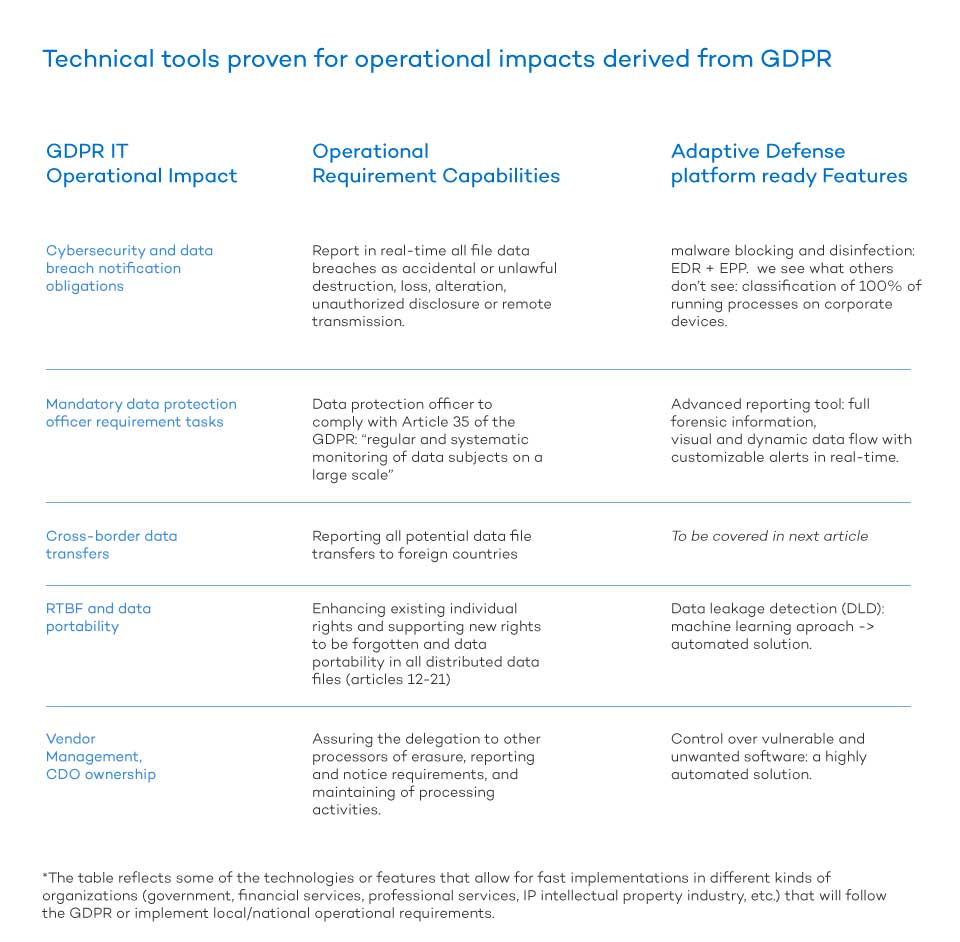GDPR is coming into play in May 2018, but a lot of companies remain unprepared, which could have implications on how they process data.
The post 10 ways to prepare your organization for GDPR appeared first on WeLiveSecurity
![]()
GDPR is coming into play in May 2018, but a lot of companies remain unprepared, which could have implications on how they process data.
The post 10 ways to prepare your organization for GDPR appeared first on WeLiveSecurity
![]()

There’s a new challenge that lies ahead for businesses that have operations within the European Union. The new General Data Protection Regulation came into effect on 25 May, 2016, and will begin to be enforced 25 May, 2018.
With the focus on protecting the fundamental rights and freedoms of natural persons and their right to the protection of personal data, the regulation establishes obligations and advantages both for private entities and public administrations.
Panda Security’s “Preparation Guide to the New European General Data Protection Regulation” introduces the new legislation to businesses before its application in 2018. Disregarding the application of the GDPR could lead to costly administration fines of up to 20,000,000 euros.
Panda’s objective is to address the need to adapt data security practices and thereby give its clients a competitive advantage.
One of the main points of the white paper is that taking action only when an infringement has already occurred is insufficient as a strategy, since such a failure can cause irreversible damage to interested parties and can be very difficult to compensate.
Here are some sanctions and other potential problems stemming from non-compliance with the GDPR:
For organizations dealing with data, prevention is the core element of the regulation. We underscore the importance of working with vision and anticipation as a competitive advantage in business strategy.
Businesses that have put their trust in Adaptive Defense are already well on their way to complying with the GDPR. It offers:
The post Panda Security’s GDPR Preparation Guide Helps Ease the Transition to the New Regulation appeared first on Panda Security Mediacenter.
The General Data Protection Regulation (GDPR), the biggest reform of privacy legislation for 20 years, will come into effect on May 25, 2018, bringing with it major changes to Europe’s privacy laws.
The post Is GDPR good or bad news for business? appeared first on WeLiveSecurity
![]()
There is a growing amount of personal information and data available on the internet that is accessible to an infinite number of businesses and organizations. In regard to this, there is something we must keep in mind: GDPR.
The General Data Protection Regulation (GDPR) affects all businesses in the European Union. It also affects businesses that offer services to EU citizens, monitor their behavior, or obligate them to give information extracted from data processors.
But, what will happen to the IT security sector once the BREXIT is in full swing?
1- The baseline scenario for most organizations and companies larger than 250 employees in the EU: institutions who have successfully empowered employees with business silo information, who have implemented Big Data tools, and generated trillions of data files from productivity tools.
2- To fix the IT problem we need to take back control of the distributed information silo and comply with rules 12-21 of the GDPR (clear ownership, custodian and new specific accesses like the right to be forgotten, serious and proactive reporting of all data leakage and manipulation incidents, etc.) while satisfying the growing demand for digital transformation. This suggests that there is a greater distribution of business data that is both quick and automatic.
3- Lastly, we must place some importance on some of the technologies that have been implemented and personalized in different companies (Spain) over the last two years. The results have been positive with a different operational impact deriving from the GDPR based on intelligent threat platforms like Panda Adaptive Defense 360.
These changes should be in full swing by mid-2018. It is uncertain how to anticipate the GDPR changes, especially when it comes to implementing operational changes related to cross-border data transfer. We hope this information is useful for people in IT roles who are up against similar situations. We will continue to look over the current regulations and wait for GDPR updates following the BREXIT. Stay tuned!
Author: Salvador Sánchez Taboada https://www.linkedin.com/in/salvadorsanchez/es
The post GDPR: Enabling Digital Transformation in the EU appeared first on Panda Security Mediacenter.